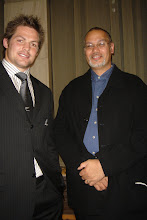 Whales were valued for the oil that they produced, when their blubber was boiled down. The oil was useful in industry especially the factories of England but also in lighting the streets. Belich writes that Britain spent £300,000 per year on whale oil for its street lamps. Other parts of whale were also useful, bone, and baleen (the frilly teeth from baleen whales, was made into buggy whips and corsets.)
Whales were valued for the oil that they produced, when their blubber was boiled down. The oil was useful in industry especially the factories of England but also in lighting the streets. Belich writes that Britain spent £300,000 per year on whale oil for its street lamps. Other parts of whale were also useful, bone, and baleen (the frilly teeth from baleen whales, was made into buggy whips and corsets.) Whaling ships had the reputation for being rough and ready. They (reputedly) smelt so bad you could smell them before they could be seen. When whales were sighted Whaleboats were launched and crews chased down the whales. Once harpooned the crew then endured the “Nantucket Sleigh-ride” until they exhausted whale could be harpooned again (and again) until it died. Then the whale (often with the help of less successful crews) was towed back to the ship. Whale blubber was then (flensed)cut off in huge strips which were then boiled in Try Pots giving off smoke and the dreadful stench. (think of the deception used at the end of Russell Crowe’s ‘Master and Commander’)
Whaling ships had the reputation for being rough and ready. They (reputedly) smelt so bad you could smell them before they could be seen. When whales were sighted Whaleboats were launched and crews chased down the whales. Once harpooned the crew then endured the “Nantucket Sleigh-ride” until they exhausted whale could be harpooned again (and again) until it died. Then the whale (often with the help of less successful crews) was towed back to the ship. Whale blubber was then (flensed)cut off in huge strips which were then boiled in Try Pots giving off smoke and the dreadful stench. (think of the deception used at the end of Russell Crowe’s ‘Master and Commander’)Whaling was dangerous. Few seamen could swim and life aboard the ship was dangerous enough let alone chasing and catching an angry whale. Moby Dick was based on a true story. The whaler 'Essex' was sunk in 1820 by an angry Sperm Whale that smashed in its side.
 When they had the chance the Whaling crew wanted to let loose and have a (really) good time.
When they had the chance the Whaling crew wanted to let loose and have a (really) good time.
At first they called into Port Jackson to re-supply but quickly found the regulations and taxes (and corruption – early Sydney was run like a fiefdom by the Officers amongst the guards) to onerous. Luckily nearby was a tax free haven. The Bay of Islands was already recognised as a world class anchorage. A tiny settlement Kororareka developed into what the Whalers wanted most, a safe anchorage, with plenty of food and water, cheap rum and women.




Please DO NOT click on the link above. It is bloody spam link that I don't seem to be able to delete. AS a result you will need to verify any comments.
ReplyDelete